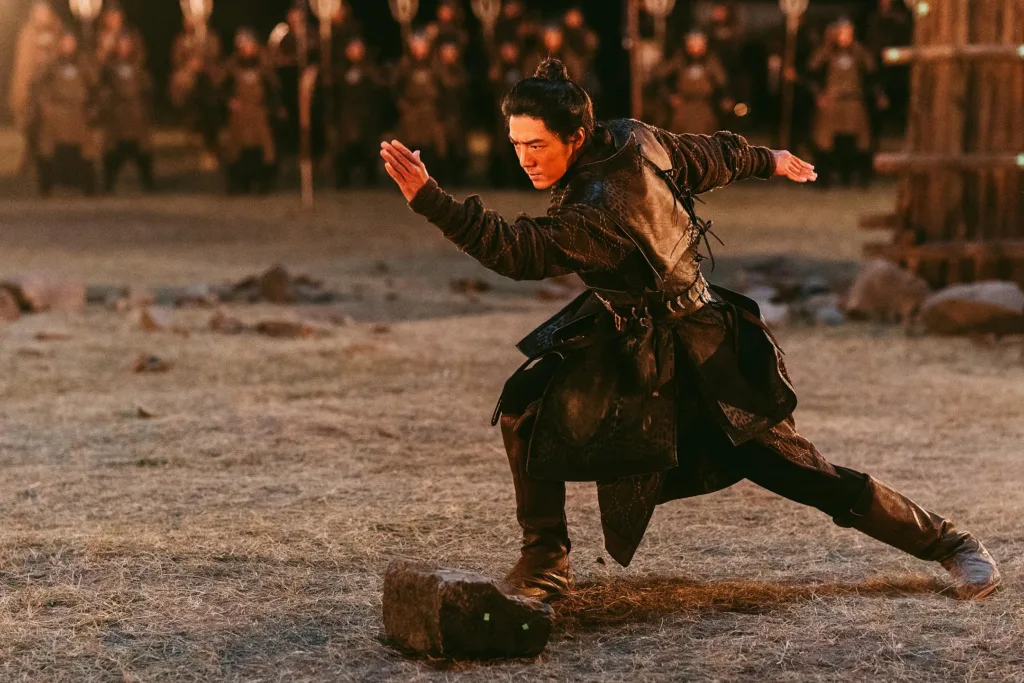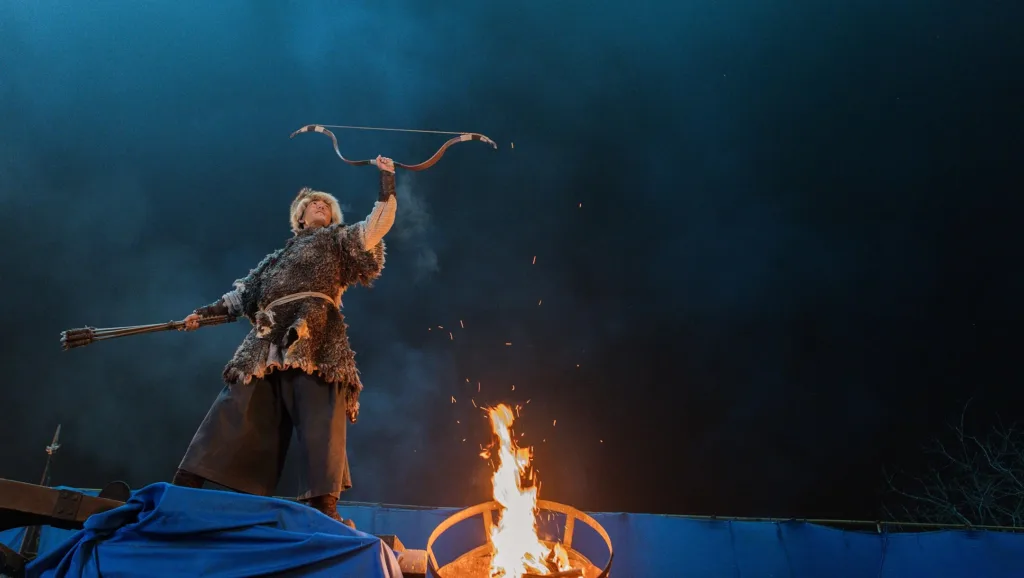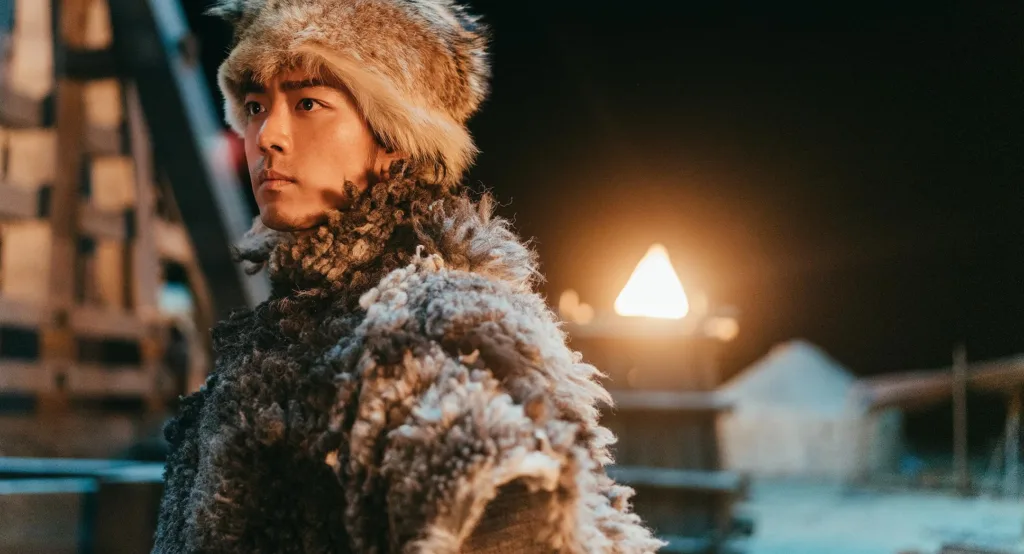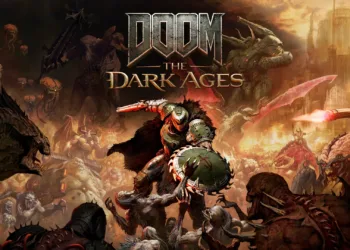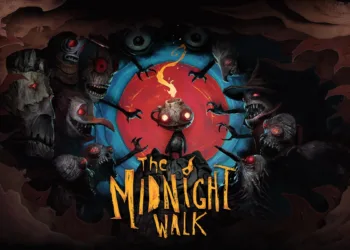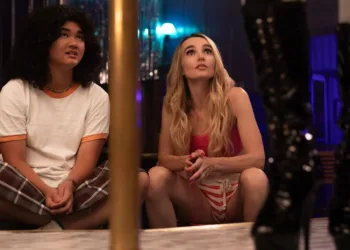The film emerges as a screen adaptation of a storied wuxia narrative, centering on a code of chivalry and dynamic martial arts traditions. Set against a historical stage marked by conflicts among the Mongol forces, the Jin Dynasty, and the Song people, it transports viewers to a time of turbulent alliances and fierce rivalries.
The story follows Guo Jing, a young man born into the Song legacy yet nurtured amid the Mongols, whose personal struggle with identity mirrors the clash of cultures surrounding him. His connection with Huang Rong, a spirited and independent character who rejects confining social norms, forms the heart of a tender yet determined love story. Their relationship reflects a shared resistance against established restrictions, adding emotional depth to the unfolding drama.
A central plot line involves a perilous quest for an ancient martial arts manuscript, known as The Novem Scripture, which becomes the catalyst for a dramatic showdown with the formidable antagonist, Venom West. The narrative is steeped in the traditions of Chinese literature, drawing from age-old values and ethical dilemmas that have long resonated in local artistic expressions.
This adaptation strives to capture the heroic essence and moral conflicts rooted in its source material, offering both culturally specific details and a perspective that reaches global audiences.
The Rhythm of a Hero’s Tale
The film’s narrative flow is structured around a timeline that traces the transformation of Guo Jing from an untrained youth into a seasoned warrior. Flashbacks and voiceover narration are employed to provide context to his origins and formative experiences.
Early scenes portray his time among the Mongols, establishing both his cultural roots and the inner conflict that defines his character. As the story unfolds, we see the progression of his martial training and the gradual forging of his sense of duty—a transformation that mirrors the challenges faced by a nation in turmoil.
The editing style features a series of rapid cuts interspersed with reflective moments that capture past events alongside current conflicts. These fragmented sequences, set against the background of intense action scenes, create a rhythm that oscillates between moments of thoughtful exposition and bursts of kinetic energy.
The juxtaposition of calm, narrative-driven flashbacks with the immediacy of combat scenes allows viewers to appreciate the intricacies of character development alongside the spectacle of martial arts. This method of storytelling raises questions about how historical memory and personal growth interact on screen.
The dialogue reflects a blend of classical formality and modern clarity. Characters speak in a manner that honors traditional storytelling, yet the cinematic techniques employed—ranging from dynamic camera angles to carefully choreographed fight scenes—inject a fresh visual approach into these time-honored narratives.
Intimate moments of character interaction are interlaced with expansive, choreographed martial arts sequences, producing a rhythm that underscores both the personal stakes and the larger cultural conflicts depicted. This interplay of narrative devices and visual style offers a multifaceted look at the hero’s evolution, inviting viewers to consider the layers of identity and tradition present in the film.
Faces and Fights: Character Depth in the Martial Arts Saga
Guo Jing is depicted as a fighter whose early simplicity gives way to a firm sense of honor. His growth is shown through quiet moments of reflection amid fierce battles. Raised among the Mongols yet tied to his Song origins, his struggle with self-identity is woven into his actions and decisions.
Scenes that show him questioning his roots or hesitating before a decisive strike provide insight into a man shaped by conflicting traditions. His steady resolve and emerging leadership qualities serve as the backbone of the film’s narrative.
Huang Rong is portrayed as a spirited and inventive figure who provides balance to Guo Jing’s earnest nature. Her clever maneuvers during confrontations and the subtle emotional cues she offers in quieter scenes demonstrate a character that blends resilience with warmth. Her presence adds nuance to the unfolding drama, with moments where her wit not only diffuses tension but also deepens the narrative’s emotional layers.
Venom West, serving as the primary foil, injects dramatic flair with his exaggerated style and flamboyant pursuit of martial prowess. His over-the-top tactics contrast sharply with the measured valor of Guo Jing, highlighting a spectrum of values that reflect different cultural attitudes toward power and honor. Other figures, such as the influential portrayal of Genghis Khan and the varied supporting cast, contribute to a broader picture of the era’s complex societal dynamics.
The performances of the cast are marked by a notable attention to internal struggles and interactions. The actors capture subtle conflicts and moments of shared understanding in ways that reinforce both the film’s martial intensity and its softer, more personal exchanges.
Chemistry between the leads is apparent in scenes filled with understated emotion, reinforcing a romance that enriches the narrative fabric and invites viewers to question the nature of identity and allegiance.
Visual Storytelling and Martial Arts Choreography
The film employs a range of camera techniques to capture sweeping vistas and intimate encounters alike. A mix of low-angle shots and expansive aerial views presents landscapes that reflect a rich historical era, drawing attention to both the isolation and the unity experienced by the characters. Ground-level cinematography brings the viewer closer to the action, creating a sense of immediacy during moments of conflict and quiet introspection.
The fight scenes are designed with careful precision, merging digital effects with live-action martial arts to create sequences that serve as narrative punctuation points. One memorable battle unfolds on a rugged terrain, where the interplay of light and shadow accentuates the fluid movements of the combatants.
The choreography of these scenes is deliberate; each strike and counter is timed to resonate with the unfolding story. The visual interplay during these sequences invites comparisons with other international productions known for their martial arts sequences, yet it retains a flavor that is distinctly shaped by its cultural origins.
Attention is also given to the period costumes and detailed set pieces, which work together to evoke the era’s ethos. Traditional garments are rendered with an eye for historical detail, and the set design employs a mix of natural and constructed elements to bring ancient fortresses and battlefields to life. Visual filters and color grading techniques are used sparingly to enhance mood, highlighting the contrast between moments of serene reflection and the chaos of combat.
These elements combine to produce a visual narrative that reinforces the film’s themes. The deliberate use of camera work, carefully orchestrated action, and period-specific design not only brings authenticity to the martial arts spectacle but also invites the audience to consider the influence of cultural heritage on modern cinematic expression.
Tradition and Transformation in a Martial Arts Epic
The film examines values of heroism, duty, and sacrifice through the personal choices of its characters. Guo Jing faces moral challenges as he contends with loyalty and the human cost of conflict, presenting a picture of warfare that affects both individuals and communities. His journey raises questions about what one must give up when following a strict code of honor, especially in a time of relentless strife.
The narrative carries echoes of Chinese ethical thought and the code of chivalry prized in its heritage. Visual details such as period costumes and carefully constructed settings help ground the story in a past that remains influential.
The depiction of duty and honor reminds viewers of other works that draw from a national legacy, yet the film communicates these themes in a way that speaks to audiences worldwide. The representation of conflict—its personal toll and the price of ambition—stimulates reflections on the impact of societal expectations across cultures.
Adapting a vast literary work into a single film is a formidable task. This adaptation captures essential moments from the original tale, preserving the emotional intensity and philosophical debates that have defined the genre.
Specific sequences, though compressed, maintain the spirit of the source material, allowing the narrative to present familiar themes in a condensed form. The film invites its audience to consider the balance between individual destiny and cultural duty, leaving room for ongoing interpretation regarding the tension between cherished traditions and the demands of a changing society.
Auditory and Visual Aesthetics
The film’s orchestral score sets a resonant tone with recurring motifs that evoke the traditions of its cultural roots. Musical phrases, interlaced with native instruments, evoke the historic spirit of the era and emphasize the martial legacy at the heart of the narrative. This approach to sound not only highlights dramatic moments but also provides an auditory link to the film’s heritage.
Sound effects in key action scenes contribute significantly to the immersive experience. The detailed layering of clashing weapons and ambient battlefield sounds creates a vivid sense of tension during combat. These auditory elements work in tandem with dynamic visuals, reinforcing the energy of each sequence and inviting viewers to appreciate the craft behind each sound cue.
Production quality stands out in the seamless integration of digital effects with live-action stunts. The editing rhythm, paired with skillful use of computer-generated imagery alongside carefully constructed sets, supports a visual narrative that is both engaging and true to its historical setting.
Detailed costume design and expansive set pieces further enhance the film’s aesthetic, providing a visual and auditory experience that sparks discussion on the interplay between tradition and modern storytelling techniques.
The Review
Legends of the Condor Heroes: The Gallants
This film delivers a striking portrayal of martial arts legacy, merging culturally rich storytelling with impressive visual and auditory craftsmanship. It offers engaging action sequences and technical finesse, though occasional narrative disjointedness and uneven character arcs are noticeable. The adaptation honors its source material while appealing to audiences worldwide, reflecting both its historical roots and modern cinematic techniques.
PROS
- Engaging martial arts sequences
- Rich visual aesthetics
- Strong cultural references
- Detailed production design
CONS
- Occasional narrative disjointedness
- Uneven character development
- Pacing issues in some scenes










































